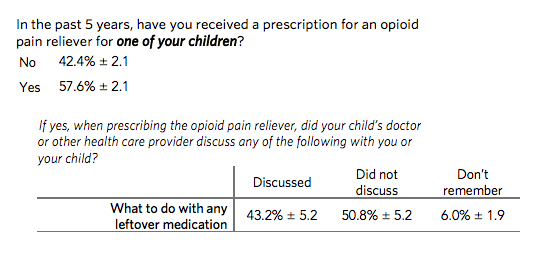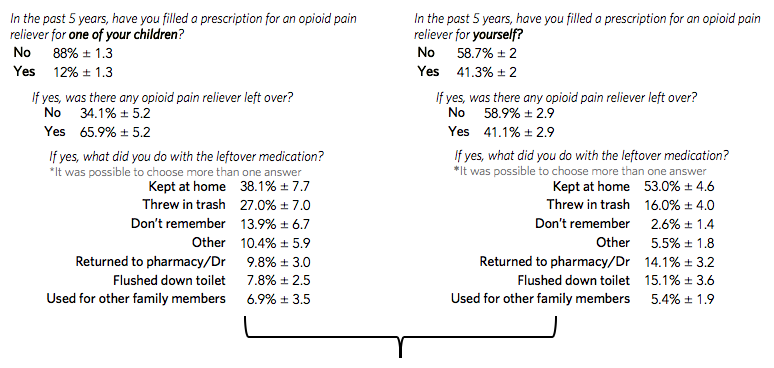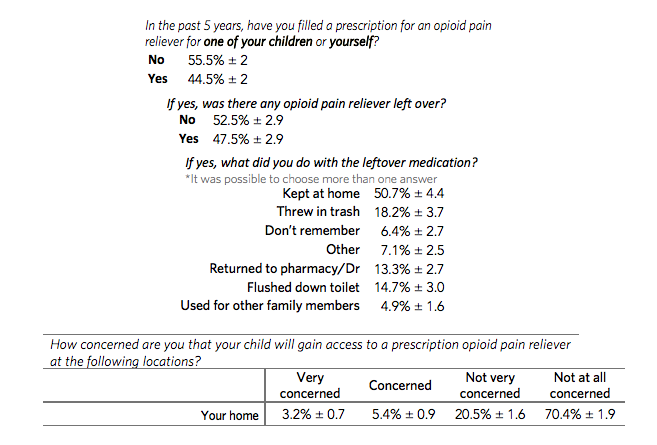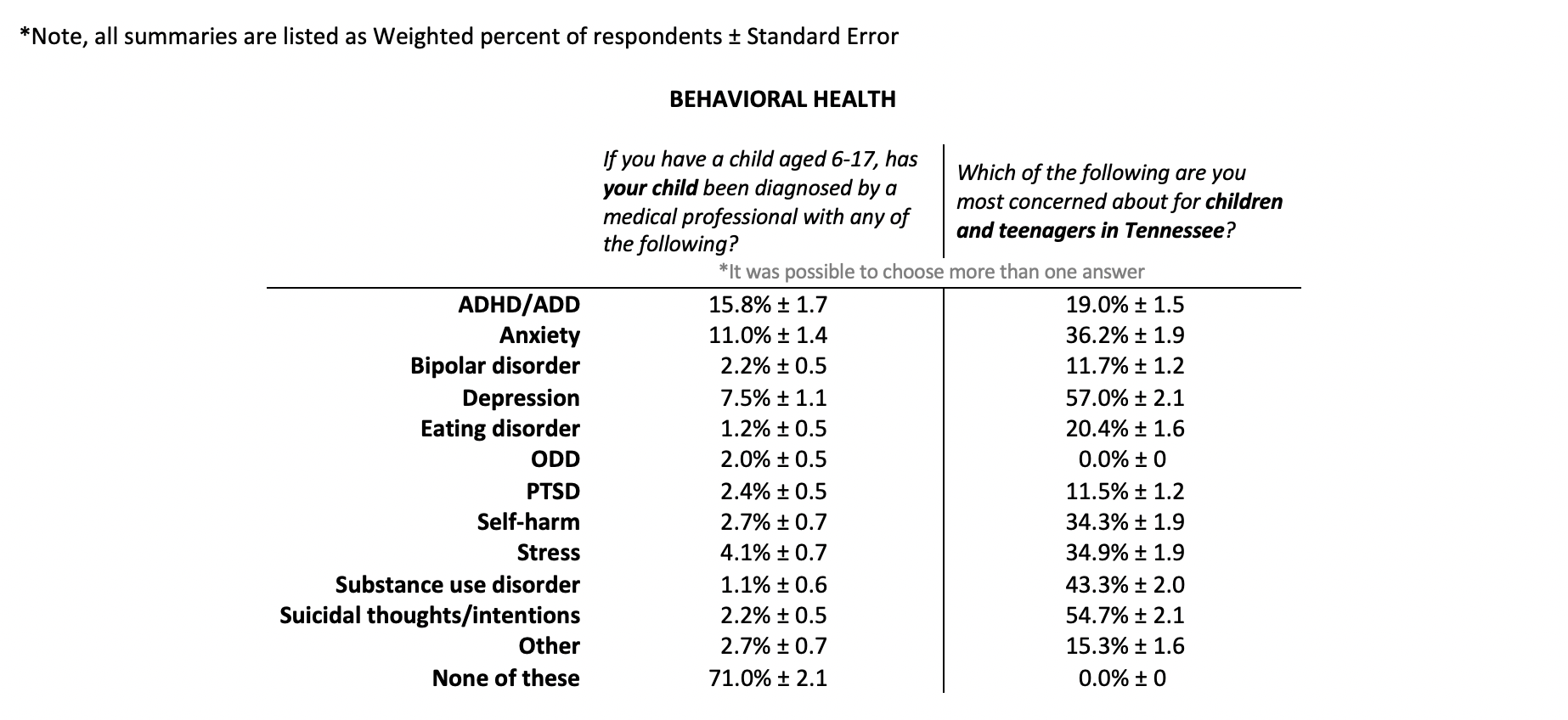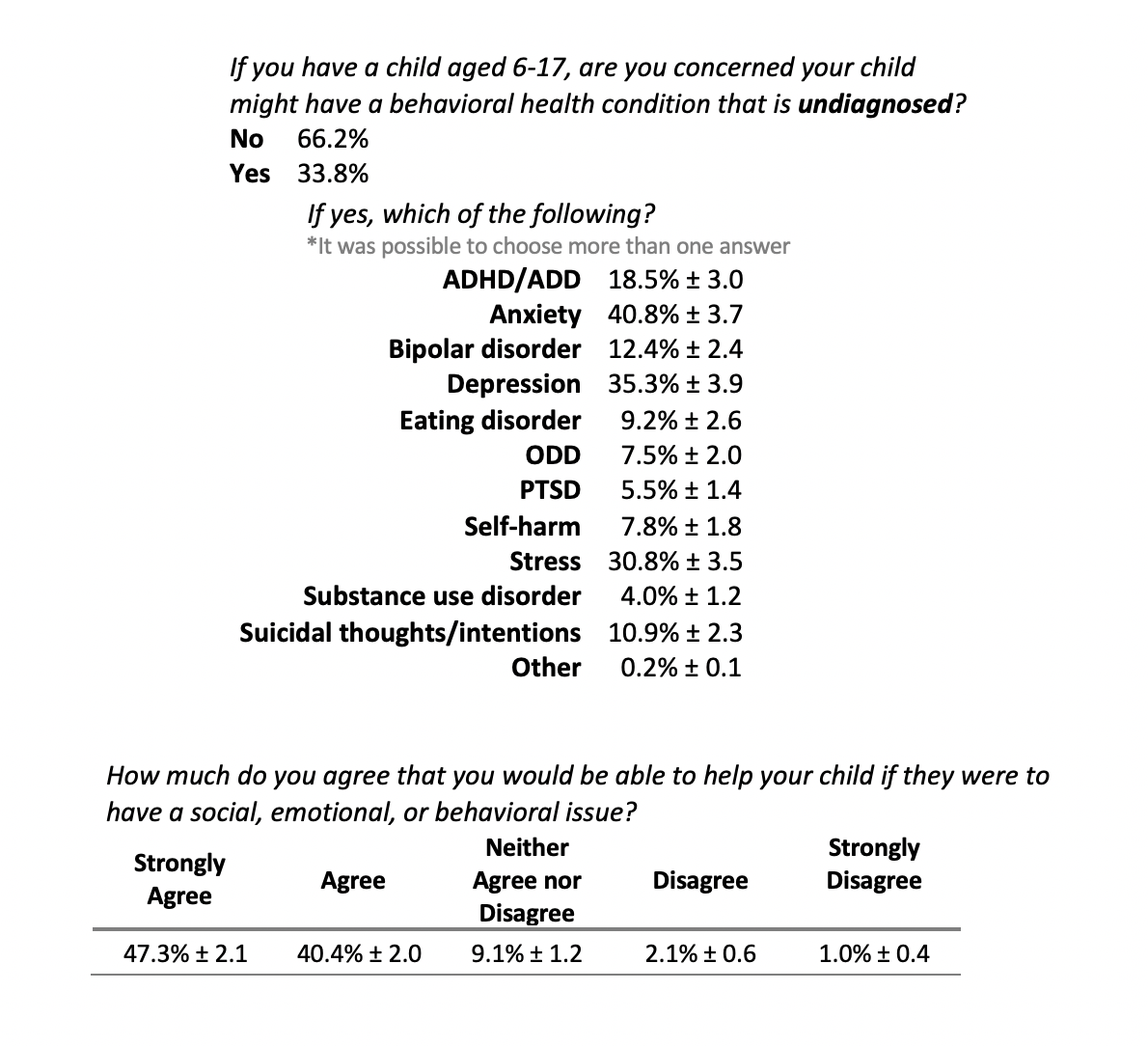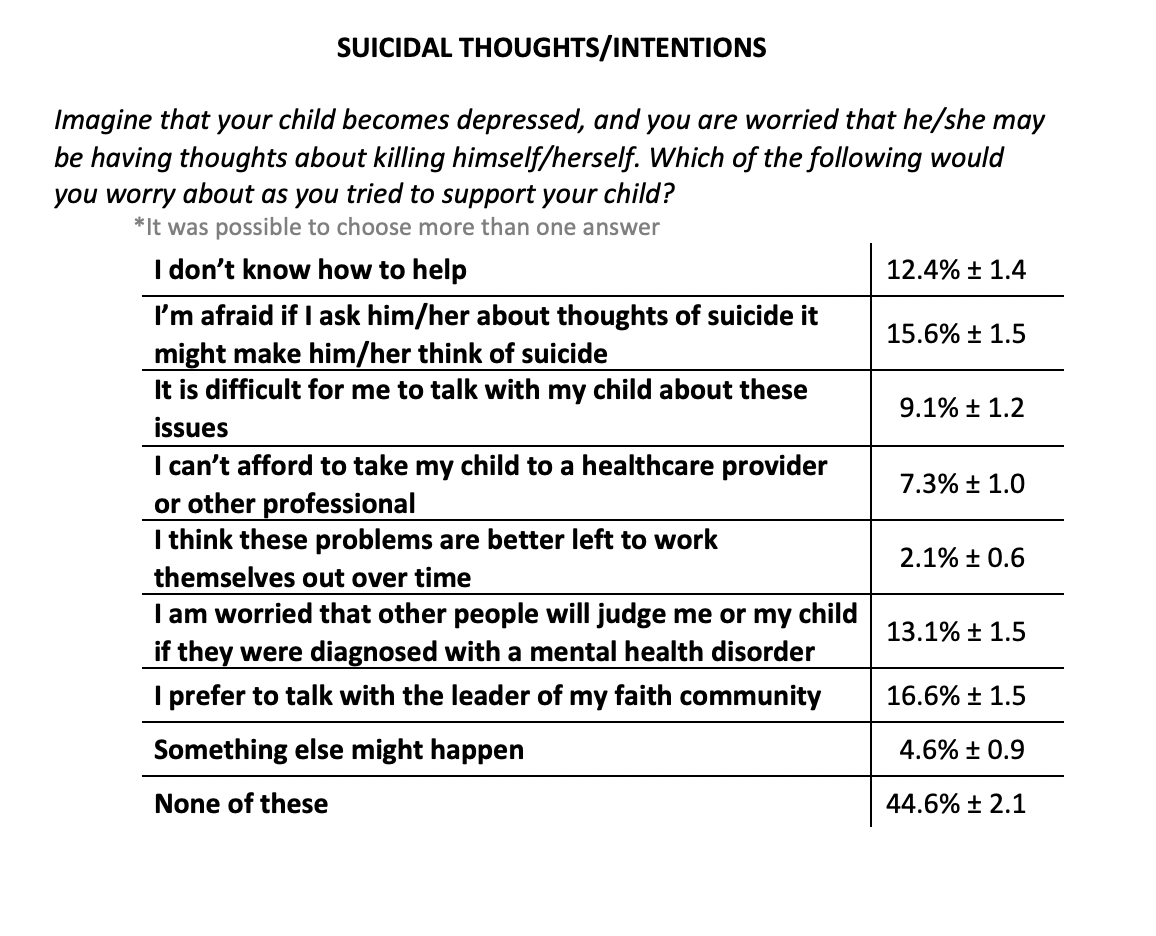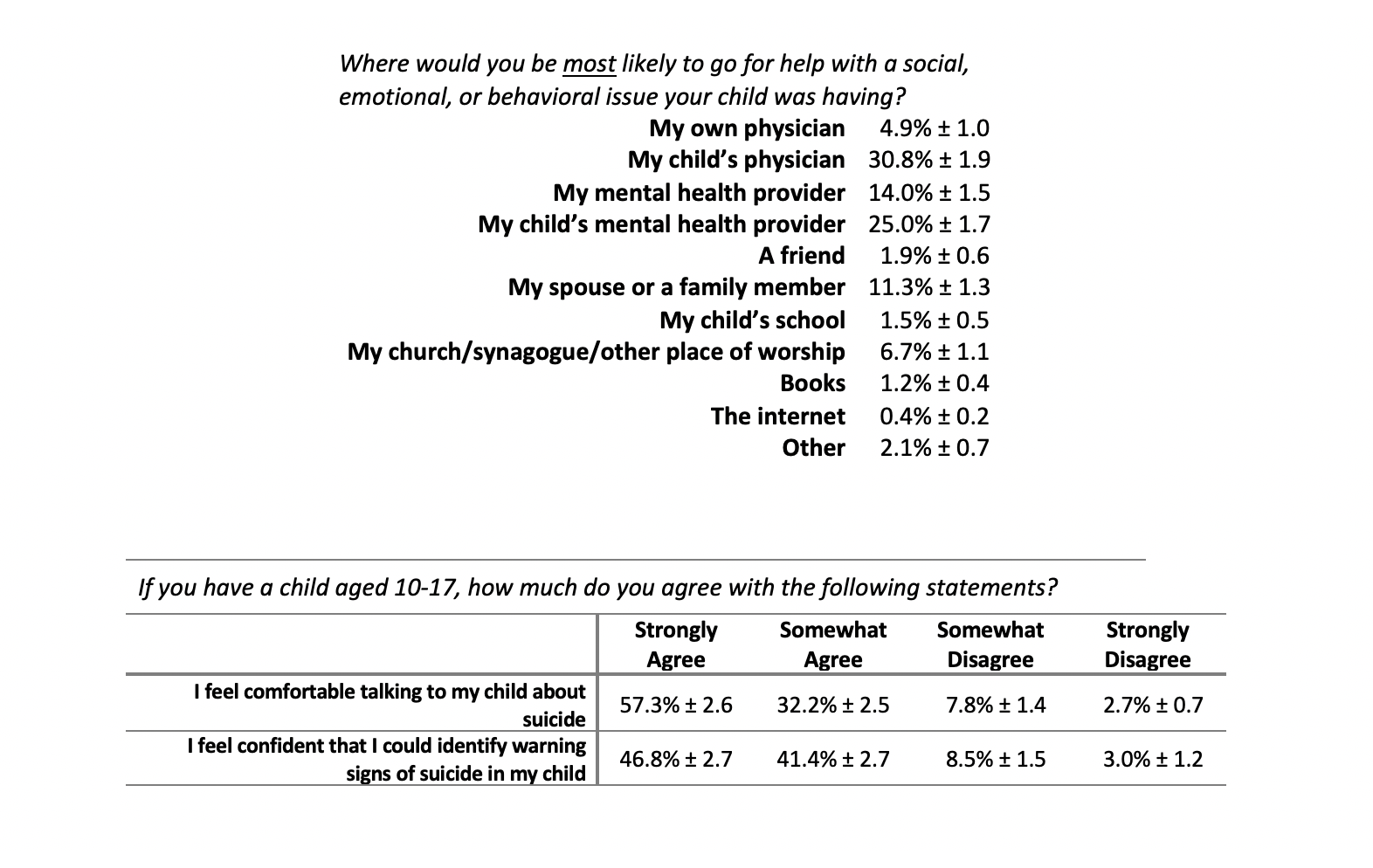The Vanderbilt Child Health Poll aimed to gather insights from Tennessee parents regarding their children's insurance coverage, opioid use and disposal, as well as mental health. This poll was conducted in the fall of 2019 by Ipsos Public Affairs (Ipsos) utilizing an online platform to collect responses from 1,100 parents in Tennessee. Respondents were required to have at least one child under the age of 18 who lives in the same household. The survey was fielded in English and had a median completion time of 10 minutes. Participants received an email invitation to complete the poll online at their convenience and non-responders were sent reminders regularly. Ipsos provided households with Internet access and hardware if needed. This electronic approach, as opposed to telephone calls or postal mail, reduces the burden placed on respondents and yields higher response rates.
Ipsos makes use of address-based sampling methods to recruit a pool of participants and subsequently selects from this pool using stratified random sampling. This methodology of survey sampling ensures that poll results will be generalizable to the Tennessee population since it is effective in recruiting hard-to-reach individuals, such as young adults and minorities.
Each participant is given a weight based on their demographic information. These weights are scaled based on demographic distributions from the 2017 American Community Survey.
The geodemographic benchmarks used to weight Child Health Poll respondents included:
- Gender (Male, Female) by Age (18-34,35-44,45+)
- Race/Ethnicity (White, Black, Other, Hispanic, 2+ Races)
- Education (Less than HS/HS, Some College, Bachelor or Higher)
- Household Income (under $25K, $25K-$49,999, $50K-$74,999, $75K-$99,999, $100K-$149,999, $150K and over)
The poll asked questions related to the following categories:
- Concerns about the health and wellbeing of children in Tennessee
- Health Insurance Coverage
- Opioid Use and Disposal
- Behavioral Health
In order to minimize biases, the order in which responses to several questions appear were randomized. For the purposes of further research, the poll also included a vignette in which different stigmatizing language about opioid use was posed to random groups of respondents. In future years, polling topics will change such that different issues related to child health and wellbeing may be highlighted.
Results from the Child Health Poll have been analyzed in R using weighted survey methods. Point estimates of the mean for each response are reported along with their standard errors.
-

